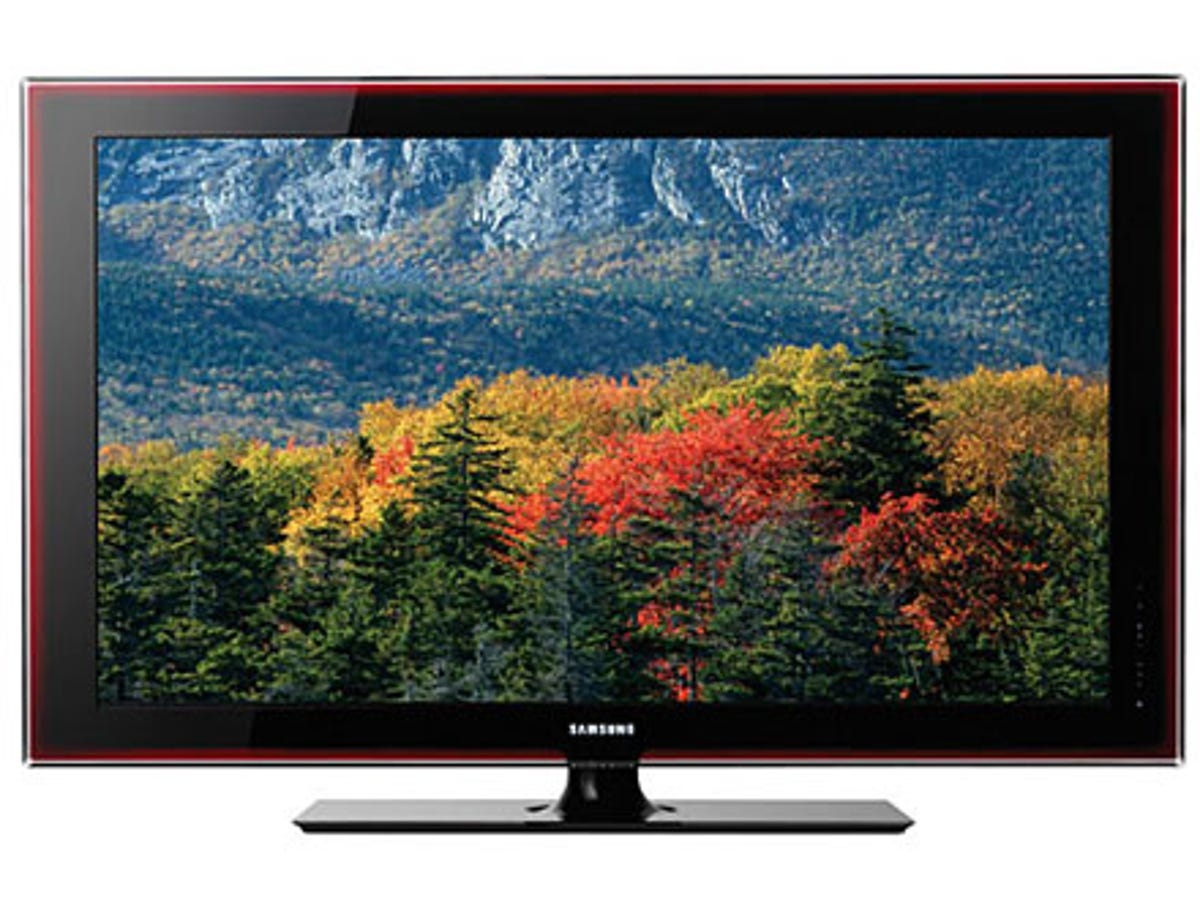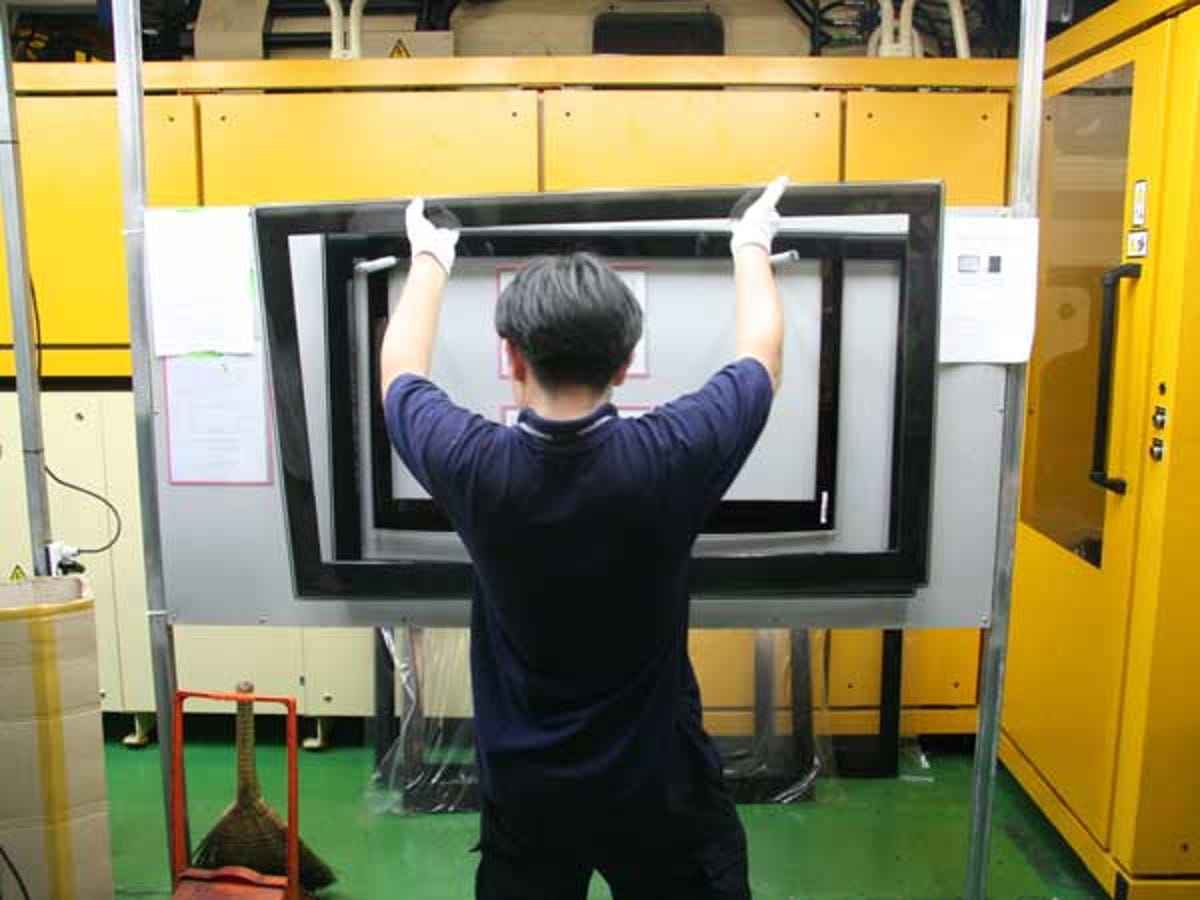Behind the scenes at Samsung's TV factory: Part I
Samsung has been in Australia for over 20 years, and it's come a long way in that time. One of the company's first products was a small, boxy CRT in the late 80's but it has risen from there to become the best-selling television brand in Australia.

Samsung has been in Australia for over 20 years, and it's come a long way in that time. One of the company's first products was a small, boxy CRT in the late 80's but it has risen from there to become the best-selling television brand in Australia.

The Suwon facility, which houses Samsung's Touch of Colour plant. (Credit: Ty Pendlebury)
One of the main factors behind Samsung's recent popularity has been in its focus on aesthetics. In 2005, Samsung underwent a form of rebirth. Perhaps inspired by its collaboration with Sony in 2004, Samsung sought to reinvent itself as a design-centric production house. As a tour of Samsung's brand museum demonstrated, the company had been known for its functional, yet sort of ... ahem ugly, products, and it sought to change all that. This philosophy gave birth to the Rome or "boomerang" design and has culminated in the company's "Touch of Colour" (TOC) brand.
We visited the plant that makes the TOC bezels, which is on the site of the original plant that dates back to 1969. The Suwon Complex south of Seoul continues to house the company's R&D operations and the TOC facility, while the televisions themselves are now built at the newer Tangjeong complex.
We met with one of the people behind the Touch of Colour design, Kang Yunje, who is the vice president of design at Samsung visual display group. He walked us through the company's vision for design, and how in his 15 years he has seen the emphasis change from utility to "beauty". He said designs tend to go in 10-year cycles, of which "glossy bezel" televisions such as the TOC are now a part. Based on this, we'll have until 2015 before the design of televisions fundamentally changes. Funnily enough, Samsung's engineers told us that OLED will become a mainstream technology around the same time.
Yunje said he designs products that are "not just a TV but an aesthetically beautiful item" and that he wasn't interested in emphasising the technology itself. When asked if men liked TVs that stand out in a room whereas women prefer them to integrate, Yunje said "that's why a man will have his own room for AV components, and a woman will stand looking in pity from the door".
According to Yunje the company uses what he calls a "360 design philosophy": designing TVs a year ahead to keep the jump on the competitors. Based on the sneak-peek presentation we saw, the 2010 models share a similar look to this year's, with some tweaks to the "crystal" stands.
Yunje said this was deliberate and helped to build a "brand identity", adding that "BMW doesn't need to change that much".
The original TOC design — as featured in televisions such as the Samsung series 8 — was apparently inspired by the glass blowers of Venice, and uses die-injection techniques pioneered in the automotive industry.
However, Yunje didn't talk about this as much as about the design of the TV itself — he said the combination of a rounded bezel and crystal stand was designed to give the TV a "lighter than air" look. Funnily enough, this was a sentiment that was echoed by LG's designers when we visited them earlier in the year.
We got to see first-hand how this process works, and how it forms one part of making a television. Once you're done, you can see Part II here.
Ty Pendlebury travelled to South Korea as a guest of Samsung.
Samsung's first Touch of Colour television featured a bezel with three colours.
The bezel starts life as plastic granules shipped in large hessian bags. If you've ever made plastic models, they feel like the little plastic offcuts that hold the model pieces onto the frame.
The main control room where the plastics are stored and prepared for melting down.
This machine is used to remove any moisture from the plastic. Any liquid would interfere with the plastic and cause bubbles in the bezel.
A room full of injection presses.
The large machines that are used to prepare the moulds consist of these giant presses — each side weighing 11 tonnes! As the "injection" method suggests, the three colours — in this case red, black and clear (our favourite colour!) — are injected into the mould and left to set. Each bezel takes about a minute.
Choo Woooo! The rear of the machine uses large hydraulic arms to press the moulds together.
After it's cooled down sufficiently the bezel is lowered onto this conveyor belt where it is delivered to the testers.

A workman compares the finished bezel against the template. He then wraps it for protection so it can then be attached to the LCDs produced at Samsung's other plants.

